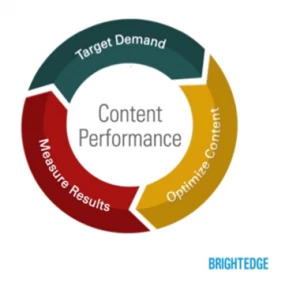Go Global and Manage Your Content
 The Internet has been growing rapidly around the world. According to Eurostat, 78 percent of EU member households had Internet access in 2014, which was 36 percentage points higher than 2007. In 2014, it was also reported that 50 percent of people between 16 and 70 had used the Internet to purchase goods and services, compared to 44 percent just two years prior. In parts of the EU, particularly the UK, Denmark and Norway, that number reaches over three quarters of people in that age range. Econsultancy’s State of Digital Marketing in Asia 2013 found that it is growing rapidly in Asia as well.
The Internet has been growing rapidly around the world. According to Eurostat, 78 percent of EU member households had Internet access in 2014, which was 36 percentage points higher than 2007. In 2014, it was also reported that 50 percent of people between 16 and 70 had used the Internet to purchase goods and services, compared to 44 percent just two years prior. In parts of the EU, particularly the UK, Denmark and Norway, that number reaches over three quarters of people in that age range. Econsultancy’s State of Digital Marketing in Asia 2013 found that it is growing rapidly in Asia as well.
As many as 73 percent of survey company participants indicated that content marketing would become an increasingly important aspect of their business plans over the next year. The digital ecosystem is growing, and businesses that want to build their brands internationally must be able to scale their SEO marketing strategy, their content and meet the growing demand in other countries and other languages. An effective content strategy to go global with requires more than just translating a website. Here is what all marketers should know about going international with their global marketing strategy.
Understand need
 To reach your international audience, you first must have an intimate understanding of what the customers in that particular region want to see from you. It is not enough to assume that every country and language needs their own local site-- that would not be cost effective and might even end up costing you customers. The information you need, however, cannot be understood just from your website analytics.
To reach your international audience, you first must have an intimate understanding of what the customers in that particular region want to see from you. It is not enough to assume that every country and language needs their own local site-- that would not be cost effective and might even end up costing you customers. The information you need, however, cannot be understood just from your website analytics.
Research into the local need and website culture is necessary. If you want to sell a particular product in Scandinavia, for example, you want to first establish that there is a market for it. Your website analytics will only tell you how many people speak English well enough to use your existing site. It will not tell you if there is a sizeable market that will be more encouraged to buy from a local site. You also have to watch for duplicate content penalties if you are building multiple local sites in the same language. If you have separate sites for the UK and the US, for example, but simply transferred the same content from one to the other, you might find yourself penalized in search results. You need to make sure the content is unique for the different locations.
Take into account cultural and linguistic factors
There are numerous terms in English that cannot be translated directly into another language. Other languages have their own systems of slang and casual speech that your prospective customers will be using when they type keywords into their search bar. If you want your content to succeed internationally, your global content team has to consider the optimization efforts necessary in the new language. This requires the use of native speakers as translators, not just someone who studied the language for a few years.
Only someone intimately familiar with the culture will be able to provide you with content that is not only in the desired language but also speaks to the desired audience. You should note that using local domains instead of just “.com” can be very beneficial for local optimization. The local domain tells Google where the site serves, helping it rank higher in queries from that region. It also helps establish a degree of trust with the local population and encourages people to link to your site and trust that you want to serve local customers. Making use of Google’s hreflang tag can help Google understand alternate versions of your pages in different locations and languages.
Analyze
A successful marketing strategy to go global with would not be complete without a full analysis. Analytics can tell you what types of content are resonating most with the local population and where you need improvement. Without analytics, you run the risk of just producing continual content and information without the substance needed to make it efficient or valuable. A culture of content can help you accomplish this goal.
Content should not be viewed as an offshoot of a single department. It needs to be part of the entire digital marketing ecosystem. When done correctly, content can provide direct value to the organization by enhancing brand reach and reputation as well as bringing in leads and sales. That is why you should focus on hard metrics that directly measure the site’s performance, return visitors, content engagement, and impact to sales rather than just page views. Metrics that measure your brand reach and reputation can be particularly helpful as you move into a new country and language. You will be able to see how well your site has been received. Measure data such as:
- The number of unique and return views compared to bounce rates and the time spent on the page
- The number of leads and sales achieved
- The number of comments left on pieces and how people engage with it
- What people are saying about your brand and how your content impacts the sentiment
- The cost per lead and the cost per sale
Using tools like the BrightEdge Content Optimizer can be particularly valuable. With BrightEdge Content Optimizer, you can closely look at how your pages are performing and how your competitor’s pages are performing. Learn about topics that are the highest in demand but the lowest in competition so that your writers can produce content that will be most likely to attract the desired audience. BrightEdge Content Optimizer also works inside the Adobe Experience Manager, which makes it straightforward to optimize the content before it’s published, which helps your content perform sooner – reaching a wider audience – almost immediately upon its publication.
Using Content Optimizer has the additional benefit of delivering scalable content optimization tools that improve content performance globally. Although different parts of your team will be working with different languages and cultures, Content Optimizer gives you a common framework for managing content performance, improving traffic, centralizing global content performance analytics, and unifying your content teams across the world. As an increasing number of businesses look to expand to markets beyond the English-speaking world, learning how to scale content globally is critical. To find success on the international stage, however, you need to scale your content efficiently, keeping in mind both the international concerns and the analytics of your content.

